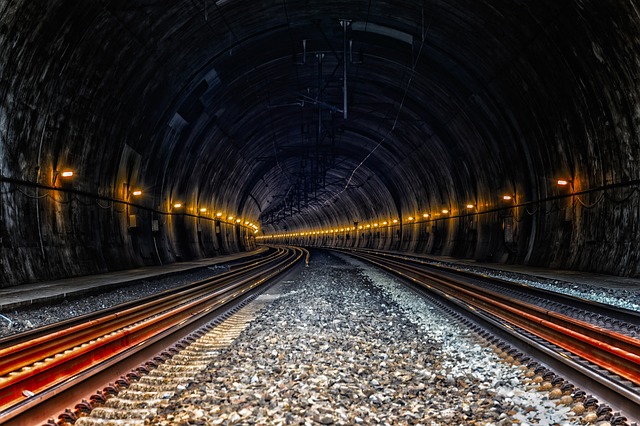Non-destructive potholing is a precise, controlled method of exposing buried utilities without damage, ideal for urban areas with dense networks. Using specialized tools, it creates small excavations ("potholes") to access pipes, cables, and infrastructure, minimizing risk to structures, roads, and services. This technique offers faster completion times, easier restoration, and reduced disruption compared to traditional excavation methods, making it a sustainable choice for construction and maintenance projects. Its popularity has surged due to minimal site disturbance and cost savings, as demonstrated by successful applications in real-world projects like road renovations.
“Uncovering buried utilities without causing damage—this is the essence of minimally invasive excavation, particularly through the technique known as non-destructive potholing. This approach offers a delicate and precise method for identifying and accessing underground infrastructure, ensuring safety and reducing costs in construction and maintenance projects. In this article, we’ll explore ‘Understanding Non-Destructive Potholing,’ delve into ‘The Method and Its Advantages,’ uncover ‘Equipment and Techniques,’ and present ‘Best Practices’ through real-world case studies.”
Understanding Non-Destructive Potholing: A Gentle Approach to Utility Exposure
Non-destructive potholing is a technique that offers a gentle and precise method for exposing buried utilities, ensuring minimal damage to the surrounding area. This approach involves creating small, carefully controlled excavations, or “potholes,” which allow access to underground pipes, cables, and other critical infrastructure without causing significant disturbance. By employing specialized tools and techniques, utility locators can accurately identify and map out the location of these buried assets.
This method is particularly valuable in urban settings where the ground is densely populated with utilities, and accessibility is limited. Non-destructive potholing minimizes the risk of damaging nearby structures, roads, or services, reducing the need for costly repairs and disruptions. It’s a safe and efficient way to expose utilities, making it an essential skill for professionals in the utility location and excavation industries.
The Method Behind the Magic: How It Works and Its Advantages
The method behind minimally invasive excavation, also known as non-destructive potholing, is a precise and controlled way to expose buried utilities without causing damage or disruptions. It involves using specialized equipment to create small, targeted holes in the ground, allowing access to pipes, cables, and other underground infrastructure while minimizing physical contact with these utilities. This approach is particularly advantageous for urban areas where digging can be logistically challenging and environmentally sensitive.
Compared to traditional excavation methods, non-destructive potholing offers several benefits. It reduces the risk of damaging buried utilities, which can lead to costly repairs and service interruptions. The technique also minimizes site disturbance, preserving landscapes and infrastructure surfaces. Additionally, it allows for quicker project completion times and easier restoration of the excavated area, making it an efficient and sustainable choice for various construction and maintenance projects.
Equipment and Techniques: Unlocking the Tools for Success
In the realm of minimally invasive excavation, specialized equipment and techniques play a pivotal role in successfully exposing buried utilities without causing damage. One such game-changing method is non-destructive potholing, which involves creating small, precisely targeted holes to expose utility lines below. This approach minimizes disruption to both the surface and underground infrastructure, ensuring that vital services remain undisturbed.
The process often utilizes advanced machinery like vacuum excavation trucks, which employ powerful vacuums to suction away soil while leaving utilities intact. Additionally, hand-held tools such as electric hammers and air compression devices are employed for more precise and controlled excavations. These techniques unlock a level of accessibility, enabling workers to navigate complex underground landscapes without the need for extensive, disruptive digging.
Best Practices and Case Studies: Real-World Applications of Minimally Invasive Excavation
Minimally invasive excavation techniques, such as non-destructive potholing, have gained significant traction in recent years due to their ability to expose buried utilities with minimal disruption. This method is particularly valuable in urban settings where traditional excavation methods can cause significant disturbance and expense. Real-world case studies highlight the effectiveness of these practices. For instance, utility companies have successfully utilized non-destructive potholing to identify and map underground pipelines, reducing the risk of damaging critical infrastructure during construction projects.
In one notable case, a city undergoing a major road renovation project employed non-destructive potholing to locate and mark underground water mains and gas lines. This approach allowed workers to dig narrow, targeted trenches without endangering nearby structures or disrupting daily traffic, resulting in faster project completion times and substantial cost savings. Such applications demonstrate the practical benefits of minimally invasive excavation, ensuring safety, efficiency, and reduced environmental impact in exposing buried utilities.
Minimally invasive excavation, facilitated by non-destructive potholing techniques, offers a revolutionary approach to utility exposure. By prioritizing safety, efficiency, and environmental preservation, this method has proven its worth across various industries. As demonstrated through real-world case studies, adopting non-destructive potholing can significantly reduce damage risks, streamline construction projects, and promote sustainable practices. Embracing these innovative techniques ensures a brighter future for infrastructure development while minimizing the impact on our surroundings.
